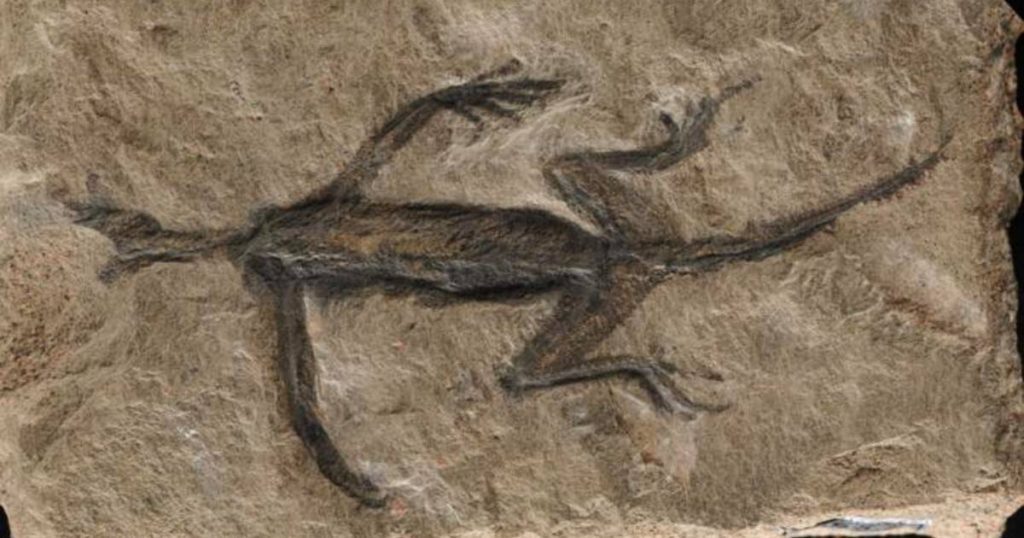A fossil of a reptile dating back hundreds of millions of years that was discovered last century in the Alps has turned out to be largely a fake. In recent decades, this has become a typical example of how bones turn into fossils, and not just skin either. The researchers explain how they discovered it was actually black paint.
The fossilized animal was found in 1931 in the Italian Alps and was described in a scientific article more than twenty years later. It has been named Tridentinosaurus antiquus and is said to be between 299 and 252 million years old. Since then, the fossil has been considered a rare find. A few fossils have been discovered in which the animal's skin has been preserved.
Comprehensive investigation
A team of scientists led by Valentina Rossi from University College Cork, Ireland, examined the fossil. The researchers wanted to know more about how the reptile fossilized, where exactly it fits into the animal's evolution and whether it was classified into the correct animal group.
Many conclusions have been drawn about Tridentinosaurus based on the shape of the fossil. Scientists decided to take a closer look at the rock. They used photography under ultraviolet light, made 3D models, took out an electron microscope and began working with X-rays. They describe this in detail in the scientific journal “Paleontology”.

Black paint
They discovered that the shape did not correspond at all to real fossilized body parts of reptiles. What looks like leather turns out to be black paint. I discovered this when I compared a piece of the fossil with paint purchased from a local store and a piece of another fossil.
Conclusion: It is a type of paint made from animal bones, and therefore not from the skin of millions of years old reptiles.
Still found scales
“This is a serious problem,” writes the scientist Valentina Rossi In a blog post. “Fake fossils can trick paleontologists into studying an ancient past that never existed.” Until now, this Tridentinosaurus dinosaur was considered one of the oldest animal mummies ever found, according to Rossi.
But the fossil isn't exactly a fake. The bones of the hind legs appear to be real, according to scientists. “We also found some small bony scales (similar to those found in crocodiles) that were probably present on the animal’s back,” Rossi continues.
This must have been a relief, because the researchers were initially unhappy with their discovery. “I think I can honestly say we were all a bit shocked and sad,” Rossi told the site. Science Alert.
But there is still an air of mystery surrounding the Tridentosaurus. “We don't know who did it and we don't know why,” Rossi says of drawing the fossil.
Free unlimited access to Showbytes? Which can!
Log in or create an account and never miss a thing from the stars.

“Lifelong entrepreneur. Total writer. Internet ninja. Analyst. Friendly music enthusiast.”











More Stories
Monster Jam Showdown Launch Trailer
The European Digital Twin Ocean prototype reveals many possibilities
Instagram now lets you add a song to your account